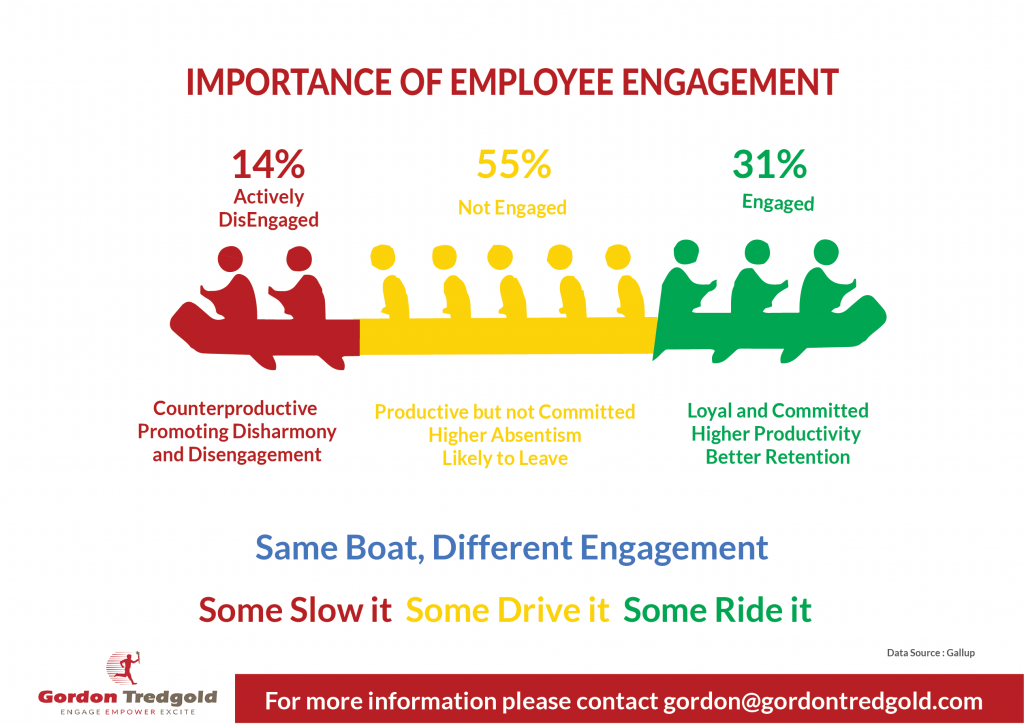
You’ve probably all heard the employee engagement stats that says approximately 2/3rds of all staff are disengaged. It’s something that gets measured every year by groups like Gallup. And has historically been stuck around this figure for the last 20 year. There are lots of articles about the impact of employment engagement, and especially disengagement, with many studies claiming that engaged employees are 17% more productive than other employees.
Based on my experience I think this is a significant understatement. I have taken over several teams where the majority was disengaged and having turned that around have seen performance improvements from anywhere between 50-500%, and often turned failing projects into successful projects.
To try and illustrate the real impact of engagement I have created this graphic showing the distribution of engaged, disengaged and actively disengaged staff as people rowing a boat.

What I like about this graphic is that it shows that we have a net 1-2 people rowing in the right direction. Which means that if we can convert one more of the disengaged people we could look at increase forward progress that by 50%. And if we could get one of the actively disengaged people productive we could have a net 200% improvement.
Now whilst this might not be more of an approximation than an exact figure, I do think that it gives us a better idea of what we can expect to see if we improve employee engagement.
I’m not a big advocate of firing people, I do think that there is often a reason for poor performance, or active disengagement, and that we should look to resolve that first before we consider other action.
However, if people choose to continue to be actively disengaged, then just removing them is going to have a positive impact on performance. In US sports they often call this, addition by subtraction, where moving one player with a bad attitude can can have a positive impact on the team just by removing them.
As a leader employee engagement has to be your absolute #1 priority, because without an engaged team it’s going to be difficult to make any real progress.
Here are three things that you should look to do to help drive engagement which will improve team performance.
Improving employee engagement can be a lot simpler than people think, but you have to focus on it, but the good news is that the benefits can be significant.
If you want to know more about how to create highly engaged teams click the link to set up a call to see how I can help
